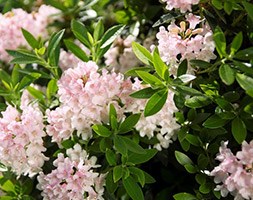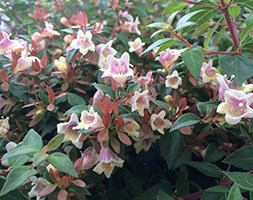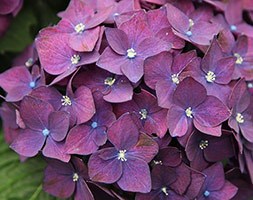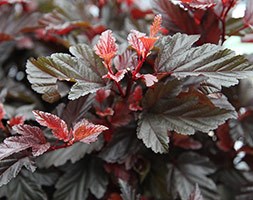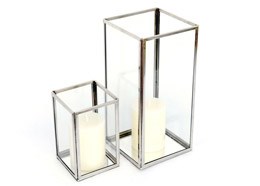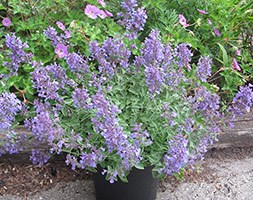New products at Crocus
by Sarah - September 6th, 2014.Filed under: Crocus, New Products.
Crocus just added these new lines
Rhododendron Bloombux (‘Microhirs3’) (PBR) (rhododendron (INKARHO group)) £19.99
Position: full sun or partial shade Soil: moist, well-drained, humus-rich, neutral to acidic soil or ericaceous compost Rate of growth: average Flowering period: May and June Hardiness: fully hardy If you are looking for an alternative to box hedging and would like something that will flower in early summer but will tolerate some shade, then perhaps this recently introduced rhododendron is just the thing. It takes pruning in its stride, so if you do want to clip it to shape, just give it a trim straight after the early summer flowers have faded. These flowers form in clusters are a beautiful shade of soft pink. They are also attractive to bees and butterflies. You can grow this compact, evergreen rhododendron along the front of a border, or use it to line a partially shaded pathway. An INKARHO type, it will tolerate soils with a neutral pH and can also be grown in a pot. Garden care: Apply a generous 5-7cm mulch of leaf mould around the base of the plant each spring.
Buxus sempervirens (common Box – hedging range) £17.97
Position: partial shade Soil: fertile, well-drained soil, including chalky Rate of growth: slow-growing Hardiness: fully hardy To find out more about how to plant a hedge , click here Common box makes a fabulous formal hedge for a partially shady site, forming a dense, evergreen screen of small, rounded, lustrous, dark green leaves. One of our recommended plants, it’s an excellent backdrop for traditional herbaceous borders. Box is happy growing in a sunny spot but the combination of dry soil and full sun may encourage poor growth and leaf scorching. If you have sandy soil, it is best to keep it in a partially shady spot in the garden. Garden care: For maximum results plant 30cm (12in) apart in well-prepared, fertile soil and water regularly until well established. Ensure that the soil or compost is never allowed to dry out. Carefully trim plants grown as hedges or topiary in mid- or late summer. Carry out rejuvenative pruning in late spring. After pruning apply a top-dressing of a balanced slow-release fertiliser such as blood, fish and bone (organic) or Osmocote (inorganic) around the base of the plant, ensuring that none touches the leaves or stems.
Abelia grandiflora Sunny Charms (‘Minduo1’) (PBR) (abelia) £14.99
Position: full sun Soil: fertile, well-drained soil Rate of growth: fast-growing Flowering period: June to October Hardiness: borderline hardy (may need protection in winter) New and quite unique, this low-growing abelia has yellow-throated flowers, which are heavily blotched with reddish pink on the inside and have a purple-pink flush to outer edges of the petals. These flowers appear in profusion over several months so the effect is quite colourful, and as the plant has bushy, low growth, it is ideal for the front of a sunny border or a patio pot. Garden care: Deadhead regularly to prolong flowering. In autumn after flowering, lightly trim back the flowered shoots to retain a neat and tidy shape. Remove any dead or damaged wood in April.
Hydrangea macrophylla ‘Dark Purple’ (hydrangea Dark Purple) £12.99
Position: full sun or partial shade Soil: moist, well-drained, moderately fertile, humus-rich soil Rate of growth: fast-growing Flowering period: July to October Hardiness: fully hardy One of the new breed of mophead hydranges, this one was chosen by us for the intensity of the flower colour. To get the best colour, you should apply hydrangea colourant at regular intervals, but even when grown in noraml or alkaline soils the flower colour will revert to a good shade of pinkish red. Long-flowering additions to the summer border, hydrangeas are one of the best-loved and hardest working of all the shrubs and therefore have become a staple. Garden care: Leave the old flower heads in place through the winter. As the new shoots start to emerge in spring cut back a third to a quarter of the previous seasons flowering stems to the base and cut back the remaining flower heads to the first pair of buds.
Physocarpus opulifolius Little Angel (‘Hoogi016’) (PBR) (ninebark) £11.99
Position: full sun or partial shade Soil: preferably acid, fertile, moist but well-drained soil Rate of growth: average Flowering period: June Hardiness: fully hardy This ninebark has only just been introduced, but already it is winning awards. It has a well-branching structure that means there is lots of lush folige, which is bright orange-red when it first appears, but will mature to a darker shade of burgundy-red. This colouring is very useful for adding depth of colour and contrast to the mixed or shrub border, and in early summer, the clusters of white flowers (and subsequent fruit) offer even more interest. A compact plant, it will also look great in a pot on the patio. Garden care: Prune old stems back to the base after flowering. After pruning apply a generous 5-7cm (2-3in) mulch of well- rotted garden compost around the base of the plant.
Simple candle holder £11.99
Classic and simple candle holders that can be used to dress the table – either indoors or out. The mirrored base reflects lots of light, so you need less of them to be able to see what you are eating. Made from nickel plated brass. > Measurements: Large: height 30cm, base 14.5cm x 14.5cm Small: height 17cm, base 10.5cm x 10.5cm
Nepetax faassenii Junior Walker (‘Novanepjun’) (catmint) £6.99
Position: full sun or partial shade Soil: moist, well-drained soil Rate of growth: average Flowering period: June to September Hardiness: fully hardy When in bloom throughout the summer, the flowers of this new, sterile catmint will be buzzing with bees. A compact grower, with aromatic foliage (that cats will love), it will look great lining the edges of a path where you can enjoy the scent each time you brush past. It will also work really well in a pot. Garden care: Cut back after the initial flowers have faded to encourage more to form. Lift and divide large clumps in spring, replanting divided specimens with lots of well-rotted organic matter. If powdery mildew becomes a problem prune out the affected areas.







